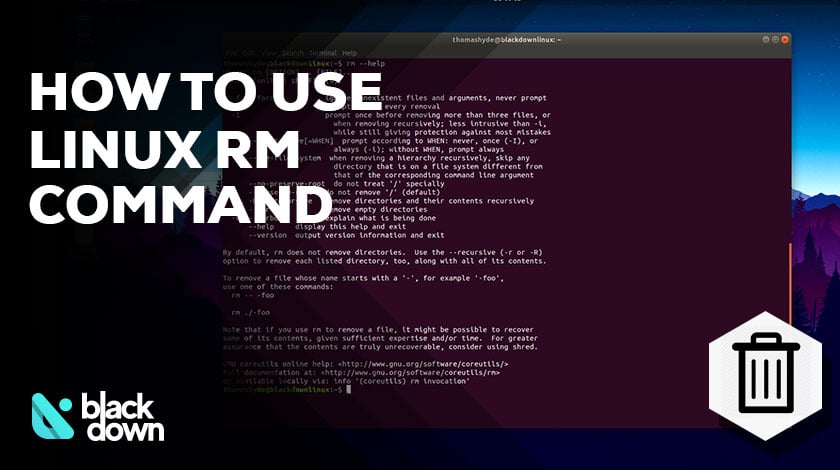One of the basic commands available in the Linux command line is the one allowing you to remove files or folders easily. By using the “rm” command, you can remove any unnecessary files and folders in a matter of seconds. Keep reading to find out how to use this function to your advantage!
A Guide on Removing Files in the Linux Command Line
The first thing to ensure is that you identified a file or folder that you do not need anymore. Keep in mind that a deleted file cannot be restored later, which means you need to be 100% sure in your decision.
If you want to delete a single file, your command should look like this:
rm name_of_the_file
If you previously protected the file, you will need to confirm the command. The system will ask you if you are sure about removing the file you selected. Type “y” in the command line and confirm by pressing Enter. The system will now permanently remove the file.
You do not have to delete files one by one. Instead, you can delete more of them at the same time. Here is how that command looks:
rm name_of_the_file1 name_of_the_file2 name_of_the_file_3
You can type as many files as you need to delete.
The rm command is also convenient if you want to remove all files of the same type in the working directory. To do that, you should type the following:
rm *.txt
By using this command, you will delete all .txt files in the current directory.
However, be very careful with this option because you do not want to remove a file that you may need in the future. You may take advantage of the “ls” command that will list all the files in the folder. That way you can confirm you do not need any of the files you are deleting.
Now, let’s take a look at some other options you can use when removing files:
- -i – command the system to ask you for a confirmation before deleting each file.
- -f – the system will “forcefully” delete all files, including the ones that are protected, without asking you for confirmation.
- -fv – a combination of “forced” delete without any verbose mode prompt.
In case you can’t remember, here is how you can issue these additional commands:
rm -i name_of_the_file1
For other options, change the “-i” with the desired function.
A Guide on Removing Folders in the Linux Command Line
If you have a folder without any files in it, use the following command to remove it:
rm -d folder_name
In cases when you want to remove folders with files in them, as well as those files, use this line:
rm -r folder_name
Some folders may have the protection feature active. In that case, you should either confirm the deletion with “y” when prompted or use the following command to avoid the prompt:
rm -rf folder_name
The command used to remove multiple folders at once is the same you use for files:
rm -r folder_name1 folder_name2 folder_name3
Wrap Up
The rm command is one of the basic Linux commands, and you shouldn’t have any problems using it to remove files and folders. We hope that you enjoyed the guide. Let us know if you have any questions!
Jason Moth
Related posts
Popular Articles
Best Linux Distros for Developers and Programmers as of 2024
Linux might not be the preferred operating system of most regular users, but it’s definitely the go-to choice for the majority of developers and programmers. While other operating systems can also get the job done pretty well, Linux is a more specialized OS that was…
How to Install Pip on Ubuntu Linux
If you are a fan of using Python programming language, you can make your life easier by using Python Pip. It is a package management utility that allows you to install and manage Python software packages easily. Ubuntu doesn’t come with pre-installed Pip, but here…











